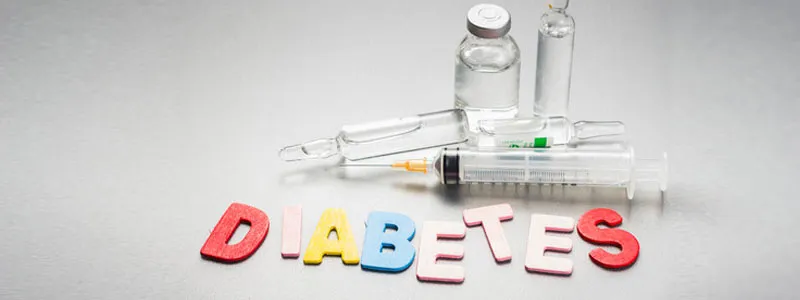A team of scientists from the Biomedical Research Unit of the Mexican Social Security Institute (UIBMZ-IMSS) of Zacatecas, in coordination with the Academic Unit of Chemical Sciences of the Autonomous University of Zacatecas (UACQ-UAZ), determined that metformin intervenesin the ulcers healing process and helps avoid amputations in patients with diabetes.
Mexican scientists published the results of their research in PLOS One magazine, in its March 2016 edition, with the title “Metformin Cell Cycle Arrest, reduced proliferation, Wound Healing Impairment in vivo and is associated to clinical outcomes in diabetic Foot ulcerPatients ”.
In an interview with the Conacyt Information Agency, Dr. Julio Castañeda Delgado, academic of chairs of the National Council of Science and Technology (CONACYT), a member of the National System of Researchers (SNI) and leader of this project, indicated that he is the first inIts type, because during the review of medical literature, those involved did not find a history of metformin studies that were directly related to the healing process.
“The project was accepted by the Teaching Improvement Program (PROMEP), with the PCT-197 Promep Uaz key, involved with the Federal Government, by the Ministry of Public Education (SEP) and funded by CONACYT.It also had partial financial support from the UAZ.Both economic bases served as a livelihood for their development, ”he said.
He informed that two other members of the National System of Researchers (SNI) were also involved in the project: Dr. José Antonio Enciso Moreno, director of the UIBMZ-IMSS-level III-and Dr. Alberto Rafael Cervantes Villagrana-candidate level.Fatima Ochoa González also participated, who resulted in his Master's thesis in Biomedical Sciences of the UAZ;Hilda Nava Ramírez and Adriana Celene Hernández Correa, of the Bachelor of Pharmaceutical Chemist Biologist (QFB) of the UAZ and Julio César Fernández Ruiz, master's degree at the Autonomous University of San Luis Potosí (UASLP).
Successful healing
Dr. Julio Castañeda Delgado reported that for obtaining results, the research was carried out at three levels: in vitro - cell experience -, in vivo - experience with murine models - and clinical - data analysis with patient files.
Source: National Institute of Public Health.
For the first level - in vitro - we use keratinocytes, which are cells that are in different body tissues.We place metformin cells and through observation we determined that cell division decreased.With this we think that it would not only alter the development of tumors, as previously known, but we consider that it could be involved in the healing process, ”he explained.
For his part, Dr. Alberto Cervantes Villagrana clarified that his participation in the project involved experiments with groups of rats or mice - Murinos Modelos.
“Murine models are an approach to the human being, since many of the medications work the same in animals as in us.Under this scoop we did three groups of 10 healthy rats.We gave the first PBS, which is a saline solution, serum type, which does not alter the functions of the organism, was only used for hydration;To the second we gave a dose of PBS with dissolved metformin intragastric, and the third group we predicted topically, which is a medication that was already known to delay healing, ”he described.
Cervantes Villagrana explained that for this treatment the animals were anesthetized;Subsequently, from the back I extracted eight millimeters of skin - without reaching the muscle -and disinfected Benzalconium chloride wounds.Each group had photographic monitoring through which the wound area was quantified to determine the healing process of each.
“Every day we gave them the treatment as corresponding to PBs, metformin or prednisolone.A day zero were all the same, three days later they began to heal.Ten days later we noticed that the PBS maintained a naturally advanced healing, with respect to metformin, which had delayed the healing process, although not at the level of prednisolone, whose wound continued without closing, with a state very similar to the first day”
Once the glucose concentrations of each group were determined, the research team noticed that they kept on average the same level, which means that glucose does not intervene in the healing process.
Subsequently, given the review - backs of files of patients with diabetes, we noticed that the amount of amputations was lower in patients whose treatment was based on metformin, unlike patients who took other antidiabetic medications.This means that although metformin delays healing, it improves cardiovascular functioning - blood circulation - and reduces inflammation, which significantly decreases the risk of amputation. ”
new questions and more research
From the results obtained, Mexican scientists determined that metformin intervenes in the healing process and favors circulation.The team decided to initiate another research project that involves the monitoring of patients to evaluate the molecules included in the blood circulation.
“We finished this research but from there another prospective study was formulated that has already begun by Dr. Julio Castañeda, who now investigates what factors favor amputations to patients with diabetes.Science is like that, it gives you many answers but from obtaining information new questions to explore are asked, ”he concluded.


